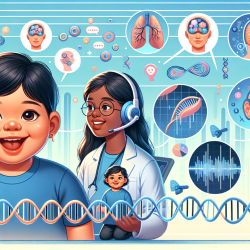Understanding the Impact of Environmental Hazards on Children's Health
As practitioners dedicated to improving children's health outcomes, it is crucial to stay informed about the various factors that can impact our young clients. One significant concern is the exposure to chemical wastes, especially for children living near hazardous waste disposal sites. A pivotal research article, "Chemical wastes, children's health, and the Superfund Basic Research Program," sheds light on this pressing issue.
The Research Findings
The study highlights that approximately three to four million children in the United States reside within one mile of a federally designated Superfund site. These sites pose a significant risk due to the potential release of chemical toxicants into the air, groundwater, and surrounding communities. Children, due to their unique patterns of exposure and biological vulnerability, are particularly susceptible to health injuries from these environmental toxicants.
Implications for Practitioners
Understanding these findings can significantly enhance our practice in speech-language pathology. Here are a few ways practitioners can implement the research outcomes:
- Increased Awareness: Be vigilant about the environmental factors affecting your clients. Understanding their living conditions can provide critical context for their health issues.
- Holistic Assessment: Incorporate questions about environmental exposure into your assessments. This holistic approach can help identify potential contributing factors to a child's health concerns.
- Collaborative Efforts: Work closely with other healthcare professionals to address environmental health issues. Multidisciplinary collaboration is essential for comprehensive care.
- Advocacy and Education: Educate families about the potential risks of living near hazardous waste sites and advocate for safer living environments for children.
Encouraging Further Research
The Superfund Basic Research Program underscores the importance of continued research in this area. Practitioners are encouraged to stay informed about the latest findings and contribute to research efforts when possible. By understanding the causal associations between environmental exposures and pediatric diseases, we can better protect our clients and improve their health outcomes.
For those interested in delving deeper into the research, the original paper provides a comprehensive overview of the study's findings and implications. To read the original research paper, please follow this link: Chemical wastes, children's health, and the Superfund Basic Research Program.










